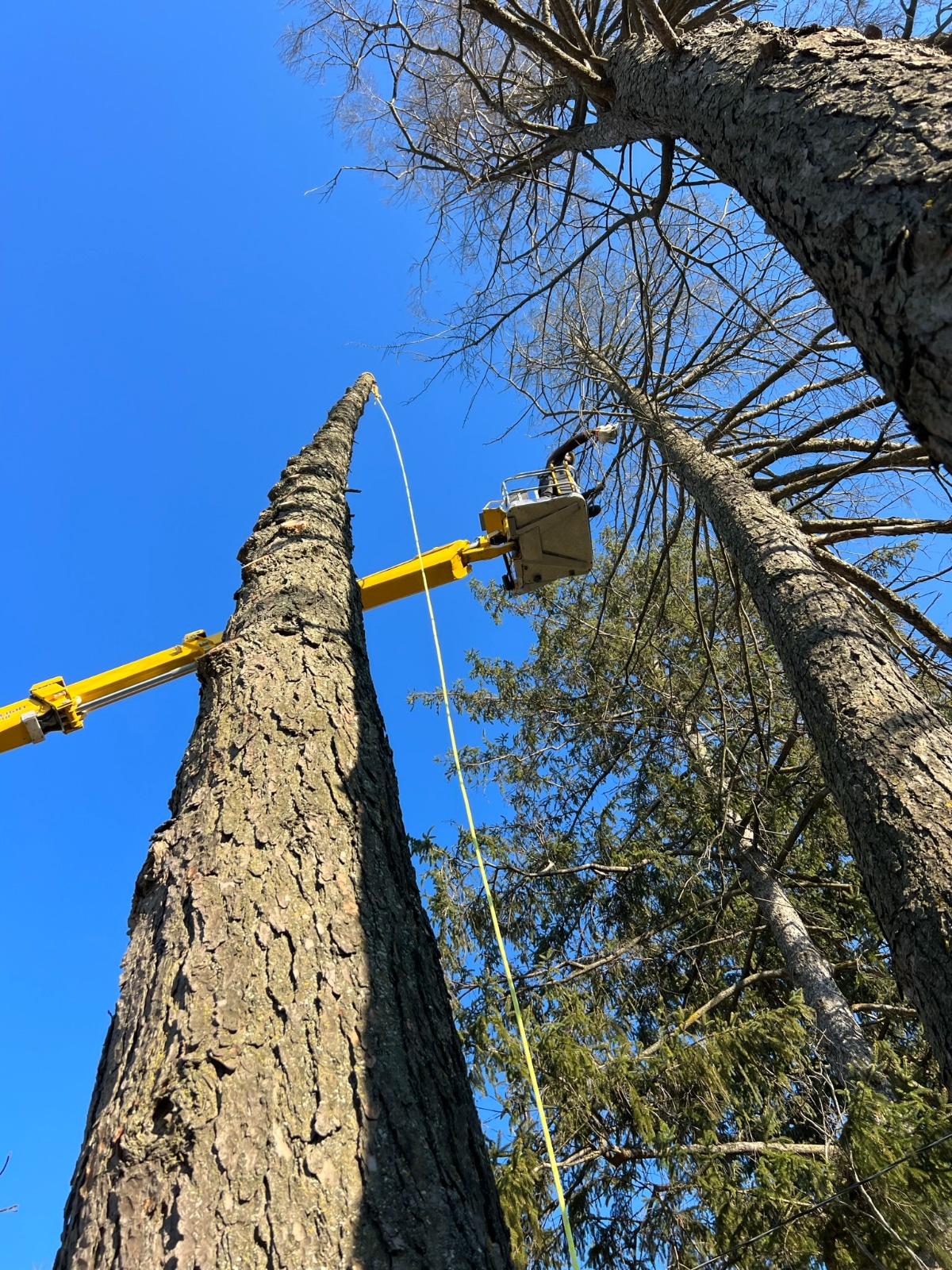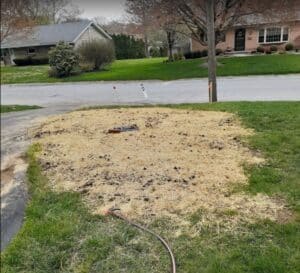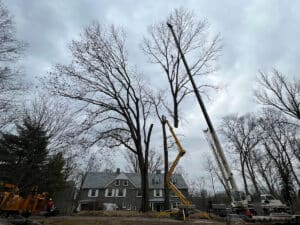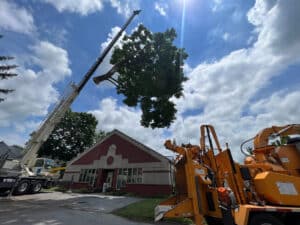What property owners need to know about local tree laws before cutting or clearing trees on private property
If you’re planning to remove trees from your private property in Pennsylvania, it’s worth asking: Are there tree preservation laws or tree ordinances that apply to me? The answer often depends on your location.
Tree preservation ordinances are local laws designed to protect existing trees — particularly mature or shade trees — in designated areas. Many municipalities in Pennsylvania require permits for tree removal or even mandate replacement tree planting if trees are cut down during land development. At Sunny Slope Tree Service, we specialize in tree removal throughout Lancaster and Chester County, and while we don’t deal with ordinances every day, we’ve seen enough to know they can catch property owners off guard.
Here’s what you should understand before moving forward with any tree work.
Why Tree Ordinances Exist
Tree ordinances help protect the urban forest, support stormwater management, provide urban wildlife habitat, and preserve green infrastructure. By regulating the removal of protected trees and requiring tree planting on development sites, communities help maintain trees that deliver numerous crucial ecosystem services — from decreased energy costs and carbon sequestration to increased property values and improved human health.
Where Tree Preservation Ordinances Exist
For many rural property owners in Pennsylvania, tree preservation laws don’t usually apply unless you’re clearing trees as part of a development project. But in urban zones — particularly in Lancaster City — the tree ordinances are much stricter.
Isaac from Sunny Slope explains:
“In Lancaster City, for example, homeowners have to get a permit before taking down a tree. The city sends out a tree inspector, and unless that tree is a hazard — like it’s leaning over a house or sidewalk — they usually won’t approve the removal.”
The Lancaster tree ordinance acknowledges the value of shade trees and existing trees as part of the city’s infrastructure. Tree protection permits are required when altering or removing such trees, especially when they are located along public rights of way or affect public utilities.
What Tree Preservation Ordinances Protect
Local ordinances often protect:
- Street trees planted within the public right-of-way
- Trees with historical significance or located near parking lots or public open space
- Mature trees over a certain trunk diameter
- Specimen trees that contribute to neighborhood character
- Newly planted trees required by a land development ordinance
If you live in a city, borough, or an HOA, check with your local shade tree commission or zoning board to see if a tree protection zone applies to your property.
Are Invasive Trees Covered by These Preservation Laws?
We’re sometimes asked whether invasive tree species like Tree-of-Heaven fall under these tree ordinances. In most cases, local governments don’t require their removal or protect them under tree preservation laws.
“We’ve taken out invasive trees, but it’s always been per the homeowner’s request — not because a township ordered it,” Isaac said.
Still, it’s important to confirm whether such trees fall within protected areas or tree protection zones before cutting.
Tree Clearing and Township Regulations
Cutting down one or two private trees for safety or aesthetics? You likely won’t run into issues. But if you’re planning:
- A land development project
- Large-scale tree clearing
- Work near public utilities or public street access points
Then it’s smart to verify whether you need a tree protection permit.
Some municipal ordinances require:
- Tree removal permits
- Tree protection standards during construction
- Replacement trees to be planted
- Review by the shade tree commission or a zoning officer
Questions to Ask Before You Start Cutting Trees…
Before beginning tree removal or clearing on your property, contact your local office and ask:
- Does my municipality enforce a tree preservation ordinance?
- Are there any tree protection zones on my property?
- Do I need a permit to remove private trees?
- Are replacement trees required after land clearing?
- Do street tree ordinances apply along the road in front of my home?
This is especially important for property abutting public right-of-way or shared access lanes.
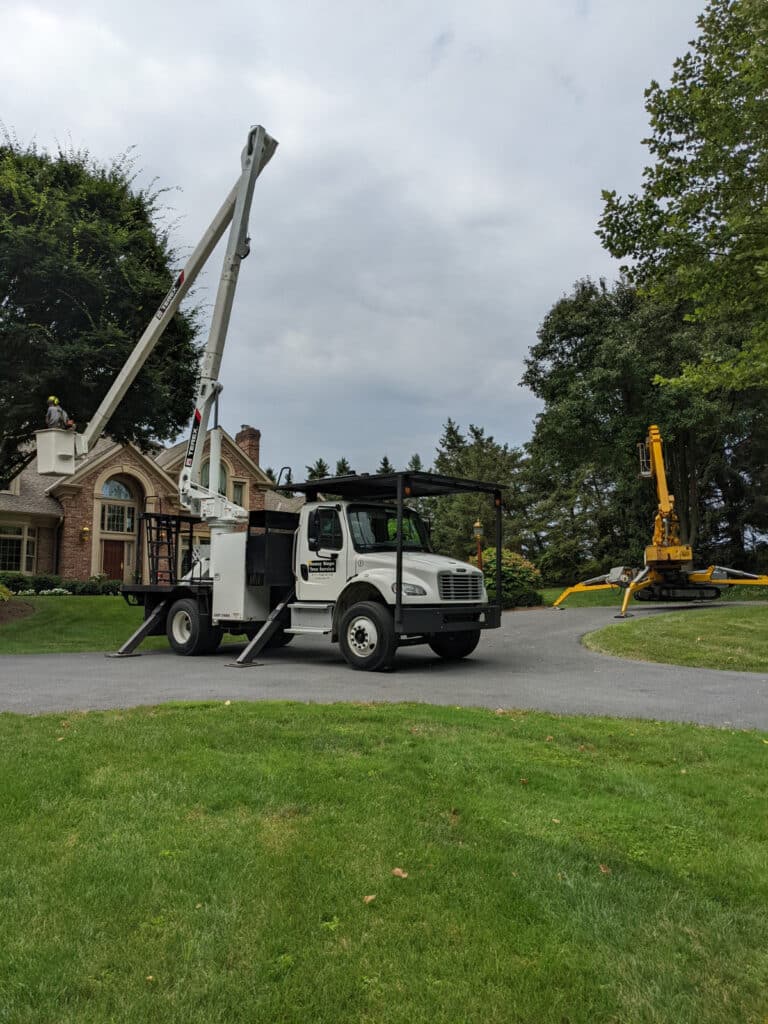
Lancaster Tree Ordinance Highlights
The Lancaster tree ordinance provides an example of how detailed local laws can be when it comes to protecting the urban forest. It requires permits for removing shade trees along city sidewalks, and it aligns with tree care standards established by the International Society of Arboriculture. Additionally, the ordinance mandates replacement tree planting after any permitted removals, reinforcing the city’s commitment to green infrastructure and stormwater management.
Read more in “Do You Need a Permit To Cut Down a Tree in Pennsylvania?“
Altogether, Lancaster’s ordinance highlights how local tree laws serve broader environmental and civic goals — from preserving mature trees to ensuring newly planted trees thrive in our communities.
What We See at Sunny Slope Tree Service
At Sunny Slope, most of our work is in rural areas of Lancaster and Chester County where ordinances are limited. But in areas with formal zoning ordinances or development plans, like Lancaster City, these rules are active and enforced.
“If the tree isn’t dangerous, they’re probably not going to let you take it down.”
We always recommend property owners do their research to avoid fines and delays.
Conclusion? Know the Law Before You Cut!
Tree preservation ordinances exist to protect the urban forest, support public safety, and preserve the natural resources that benefit us all. Whether you’re working with existing trees, planting new trees, or removing a few private trees, understanding the applicable local tree ordinances is key.
At Sunny Slope Tree Service, we don’t issue permits — but we know how to work within the rules. Whether you’re removing large trees, clearing a development site, or maintaining trees on your property, our crew is ready to help.
Need Help with Tree Removal in Lancaster and Chester County?
We’re a locally owned tree service company that has served Lancaster and surrounding communities since 1996. Our team handles:
- Tree removal
- Brush and tree clearing
- Small acreage land development prep
- Emergency tree services
Call Sunny Slope Tree Service for a free quote. We’ll help you navigate your project and avoid running into trouble with your local tree ordinances.

